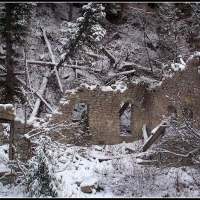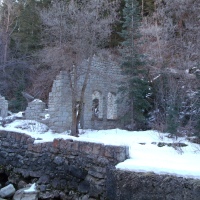What does “KOA-789” stand for, or mean?
Very simply, KOA-789 was the call-sign, or call-letters, of the Phoenix Police Department’s radio station – very similar to what you would hear the DJs or commercial radio station announcers say over the air, or the way you would even refer to the radio station itself, like KSLX, KDKB, or KJZZ, KNIX, etc. While it may sound odd that a police department would have a radio station, it helps to understand that the FCC considers the collective of radio frequencies, or radio system, that a police, fire, or other public safety agency uses for communication purposes, to be a “station.”
When I said that KOA-789 were the call-letters, I meant that they used to be and technically no longer are. Several years ago, Phoenix Police upgraded their radio system to an 800MHz technology, no longer using the antiquated UHF radio-frequency system that is still in use by many smaller agencies across the country. The 800MHz system is digital and has many advantages over the older system. It also automatically sends a signal broadcasting its own unique digital marker, or call-letters, over the air.
The FCC has rules that require radio stations to announce the call letters and time on the hour and half-hour marks. In specific regard to Phoenix Police, and likely other police agencies, as well, when they were operating with the older radio system, dispatchers used to announce the time and radio station call-letters according to FCC regulations. It was often in conjunction with dispatching a call, during the broadcast of some other pertinent radio traffic, or when the dispatcher from one precinct’s frequency had finished giving information on another precinct’s frequency, as in – “the frequency’s clear at twenty-three-forty-six-hours, K-O-A-seven-eighty-nine.” During the late hours of the night or very early hours of the morning when the radio was quiet, meaning that no officers were clearing the dispatcher or each other, the dispatcher would simply announce the time and call-letters – “It’s zero-three-hundred-hours, K-O-A-seven-eighty-nine.”
Over the years, the call-letters somehow morphed into a symbol or a trademark of the department, so that whenever one saw or heard the letters, the meaning was well-known or understood – at least by officers and dispatchers, as they were the ones commonly using the call-letters. At some point, license plate frames were made and distributed (sold to employees) with “Phoenix KOA-789” on them, so that the vehicle owner/driver could tell other drivers, and police officers specifically, that they were part of the Phoenix Police family. Other police agencies would have their own call-letters for their radio “stations” that were in a similar form, which meant that their officers would recognize the license plate frame information and consider that the driver was a police employee. On a trip to California, I happened to see a frame on a vehicle that said “Los Angeles KOA-XXX.” I don’t remember the specific numbers that came after the KOA, but I was surprised to see that LAPD had their own license plate frames.
Again, KOA-789 used to be the call-letters of the Phoenix Police Department’s radio station. With the advent of the 800MHz technology, the dispatchers were instructed to stop broadcasting the letters with the time on the hour and half-hour marks during their shift; they were told that it was actually prohibited. That change in radio systems, however, doesn’t prevent police employees from putting the “slogan” on their cars or saying it among themselves, or even tagging the letters onto the end of a story, the recounting of a sentimental or nostalgic memory about a former employee, or even a recollection of how things were “in the good ol’ days.” The use of the letters is not likely so common among the newer officers and dispatchers, but to remove it from the veterans’ vernacular would be akin to removing it from the department’s coat of arms or family crest, for it remains a symbol of belonging, comraderie, and family among those who work for the department (or used to).
This article was written in response to several people finding their way to my blog, somehow, when checking the internet with search queries of “what does KOA-789 stand for?” or “what is KOA-789.” While some of the technical information might not be 100% accurate, it represents my understanding of the history of the call-letters from having been a police 9-1-1 operator, dispatcher, and communications supervisor with the Phoenix Police Department for over 10 years. Please feel free to submit your corrections or additions to the information…at zero-nine-hundred-hours, K-O-A -seven-eighty-nine….










Your post about KOA-789 says “no longer using the antiquated UHF radio-frequency system” The primary frequencies for Phoenix PD were VHF with 6 UHF frequencies used mostly by the detective bureaus.
As far as antiquated, far from it. The City of Phoenix had and still had on the FD side one of the best Analog systems in the country. You think the new APCO 25 system is great? I don’t have enough time to list the problems and limitations to the system. In a disaster or extremely high traffic demand it will fails.
You must be a Motorola employee.
October 26, 2011 at 12:06 pm
Thank you for your commentary and contribution to the post. My experience with the “antiquated” radio system came as a dispatcher and communications supervisor. In comparison with the newer technology of the 800MHz system, the radio coverage and ability to communicate in the downtown areas with the higher buildings and dead-spots made the older system less than optimal. And if I’m not mistaken, the older system (or one very much like it) was used by NYPD and NYFD and did not operate well during the 9/11 disaster for the same reasons. I’m not a radio system expert by any definition; I was sharing my experience and knowledge about the transition to the new technology from the old and providing an explanation to the frequent queries about the old call-letters.
Thank you again for your contribution to the post…and no, I’m not a Motorola employee. 🙂
October 26, 2011 at 5:43 pm
I loved reading about the call letters. There is something sweet and personal about the things that used to connect us. I saw a Phineas and Ferb cartoon today (Boy watches them) about the old CB handles. It was perfectly authentic…right down to the truck stop mounted on top of the family bus. The jokes, music, jargon…it was all absolutely from that time. I hate that cartoon, but I loved that one episode. I do like Doofenshmirtz and his arch nemesis, Perry the Platypus.
I was none other then the wrestler, “Gorgeous George” back in the CB days. That was my handle. I drove from Texas to NC with my daughter who was about nine years old. The truckers whom we met always said a howdy and I could hear them telling each other along the way that a young woman with a kid was headed their way. They literally drove me blind through Atlanta that black, rainy night. There was construction there and we had to go through the middle of the city where the roadway was a narrow street with underpasses. I would have had no idea what to do without their guidance and constant contact on the CB. I will never forget those guys!
I know there was something comforting and reassuring about hearing those call numbers every hour and half-hour. I think we who worked as policeman, social workers, nurses, fireman, etc., had a sense of family that workers in other jobs might not have. Thanks for this interesting post. Brought back memories of my own.
March 25, 2012 at 8:12 pm
I’m glad you enjoyed reading about the call-letters…and glad it brought back good memories. My experience/exposure to this type of radio is limited to the work environment with the police department, but I’ve heard many tales about the CB crowd and the community and occasional rescues that were shared among that group of “friends.” Your mention of the comfort with the hourly and half-hourly announcement of the call-letters brings to my mind the responses we used to get from the officers when they visited the radio-room at work…very much like what you said…they knew we were there, watching out for them…as much as we could miles away and with a head-set plugged-in at the console. And yes, a measure of family, things that bound us together…maybe it was being witness to the pages of humanity that others didn’t get to see, or only saw in the paper or on tv. You’re welcome for the post, George…makes my heart smile. 🙂
March 26, 2012 at 6:44 am
I worked there 1985-1988 or so, I issued those call letters and time checks literally hundreds of times. Very fond memories and I miss some of the folks I worked with. I went on to dispatch in southern California for many years after that. I jumped to the computer industry in 1995. Several times, I thought about leveraging my experience in Computer Aided Dispatch development, but I never did circle back around to law enforcement.
LAPD’s callsign and license plate frame was KMA-367. Same idea as the KOA-789 frame, of course.
October 24, 2012 at 7:45 pm
Hello, Robb – I’ve heard that there were some great times back in the day…I’m sure you have some stories of your own that you could share. I’ve only been gone for just over two years and still have very fond memories of the work and some of the folks I worked with, as well. Thank you for visiting and for the info about LAPD’s call-sign…could have sworn it was KOA-something-or-other. I appreciate having the correct information. 🙂
October 24, 2012 at 9:37 pm
Kma 367 was lapd’s call sign
December 23, 2012 at 5:22 pm
Thank you, Ricco. 🙂
December 23, 2012 at 5:25 pm
This is the fourth blog, of your website I went through.
Still I actually like this specific 1, “What does �KOA-789″ stand for,
or mean? � Scott’s Place�Images and Words” the best. Regards -Alejandra
February 9, 2013 at 1:39 am
Thank you, Alejandra…I hope you’ll visit again.
February 9, 2013 at 6:12 pm
As soon as I saw the title, I immediately thought it must be the 789th KOA campground. Was I every off track!
December 30, 2013 at 8:53 pm
That’s not an uncommon thought, Dave…and yes, rather off-track. 😉
December 31, 2013 at 6:41 am
FYI: The FCC license for KOA789 is current, and valid. Not only WAS it their call sign, it still is. Try a FCC universal license search and you will see the same. Still, I appreciate the article. My amateur radio call sign is K7KOA, with the suffix being a nod to the Phoenix PD and FD (KOA519).
January 17, 2014 at 10:28 am
Hey there, Michael – thank you for the information. It makes sense that they would still have the call-sign, given that they’re still considered a radio station. I’m no expert on the finer details of FCC requirements, etc, I just knew that the requirement to voice the call-sign went away when everything went digital. Thanks again.
January 17, 2014 at 10:44 am
Actually, the requirement to identify doesn’t go away with digital radio systems, it just takes another form. Radio stations are still required (by FCC regulation) to identify themselves, but digital systems (most if not all) identify themselves automatically by digital form. It may be prohibited by department policy to voice the call sign, but it is not prohibited by the FCC. Many analog systems, too, automatically identified themselves with morse code relieving the dispatchers of the monotony and avoiding possible FCC violations by not issuing an identification within 30 minutes of the previous one (that’s why many departments issued the ID at the top and bottom of the hour).
September 8, 2014 at 10:00 pm
Thank you for the addition to the post DeltaBravo…I appreciate having the more complete information.
September 11, 2014 at 5:57 pm
Got it
July 23, 2015 at 2:23 pm
Thank you for that information. I have seen this on license plate frames for many years and I always thought it had something to do with a KOA Campground.
It’s very interesting information…and it’s nice to finally understand what that actually does mean.
March 6, 2019 at 9:53 am
You’re welcome, Jerry…and thank you for visiting…and leaving a note that you were here. 🙂
March 16, 2019 at 6:36 pm
Thanks for posting that information. I remember hearing Phoenix PD dispatch clearing with the KOA-789 from back in the 1970’s. One of the favorites was a dispatcher we nicknamed “Gravel Gertie”, because of the sound quality of her voice. She was the best. Today I still see license plate brackets on cars around the Phoenix area with KOA-789 on them. When I worked for Scottsdale PD the FCC radio designation for that agency was KOK-930. Scottsdale moved to the 800 MHz radio system as did Phoenix.
June 4, 2020 at 2:18 am
You’re welcome, Barry…and I haven’t heard the name, “Gravel Gertie,” for years! Thank you for visiting and leaving your comment…it’s nice to know you visited.
June 6, 2020 at 4:30 pm
I’ve been seeing a lot of license plate frames over the last month or so with this callsign and wondered what it was. Google results led me here and I was surprised to see that this post is over a decade old; I’ve been an amateur radio operator for two years now and I’m shocked I haven’t seen the callsign sooner/more often than I have in the last month or so! Then again, maybe it’s just the Baader-Meinhof effect.
Either way, thank you for the detailed information!
September 3, 2021 at 1:30 pm
You’re welcome for the info…and those license plate frames haven’t gone anywhere, I see at least one almost every day. Thank you for the comment.
October 1, 2021 at 9:27 am
God bless the Phoenix PD! 633David KOA789
May 9, 2023 at 11:30 pm
I remember a 633D from many years ago working 600 Radio…can’t imagine you’re the same person…but thank you for visiting and letting me know you were here. Be safe out there! KOA789….
June 27, 2023 at 6:35 am